Discover: The London Underground Art Work
Next time you submerge yourself into the tube take a moment from your smart phone to look around and see if you can spot the beautiful artwork around you.
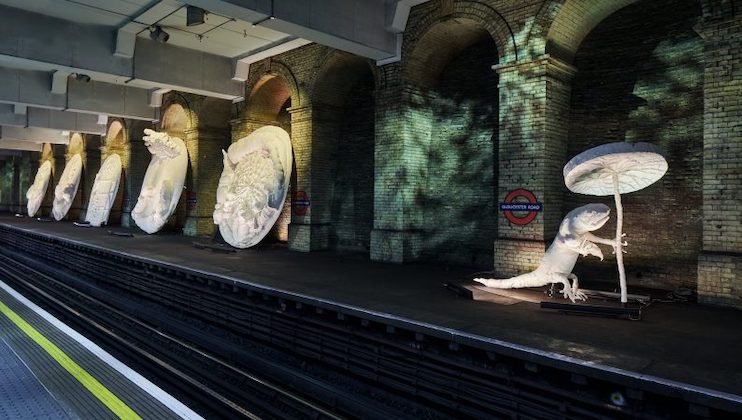
London's TFL is a giant art gallery with longer, occasionally delayed journeys between rooms. Filled with cultural history, tube stations are architectural artefacts decorated with mosaics, murals and statues. Think of it as a capital exhibition - the price of admission is a day travelcard. Here we've collected some of our favourite displays of artwork that have somewhat turned the underground into a gallery below the streets of London.
Alfred Hitchcock Tribute at Leytonstone
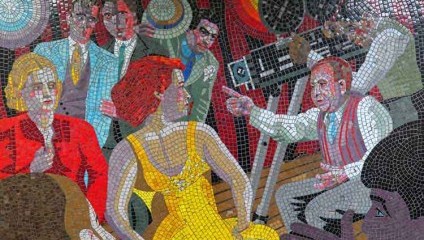
Leytonstone Underground Station, Church Lane, London, E11 1HE
The British director, famed for suspenseful thrillers and a shapely silhouette, was honoured by Leytonstone in 2001 with 17 mosaics celebrating his films. Scattered across the stations are evocative snapshots of famous scenes - from the shower shriek in Psycho, to Cary Grant diving from a plane in North by Northwest - that bring Hollywood glamour to Zone 3. The area was Hitchcock's hometown before he moved to LA, and thus helped inspire some of the most iconic twists and thrills to grace the screen. Word of warning: the Vertigo mosaic gives away the ending, and some of the more murderous illustrations might give cranky commuters a few unwise ideas.
Archie The Archer at East Finchley
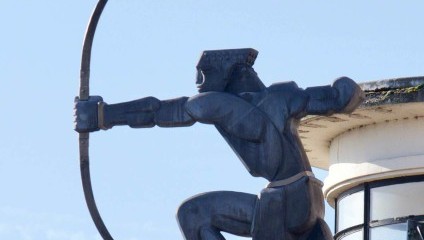
Designed by Eric Aumonier in 1940, the statue of an archer perched with a bow still stands tall above East Finchley stations entrance. Nicknamed Archie (for reasons I assume are as obvious as it sounds), it's an artefact from when the underground's construction had more personality. 'It is more than a decorative device', a train staffer wrote at the time. 'It is powerful symbolism.' At twice the size of the average human, it also serves as a warning for fare dodgers.
Water Tower at Chesham
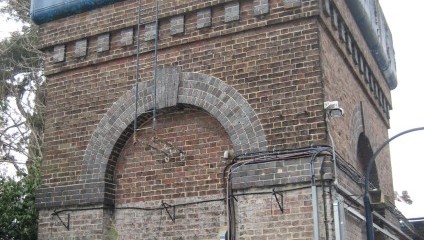
The gigantic relic by the platform is actually a water tower dating from the 19th century. The brick formation is rather stubborn, as if it can't be revamped, and it's pleasing to see a block of architectural character has endured this long. We all know someone who works in Central London but moved to somewhere like Chesham (Zone 9) for whatever reason; a water tower goes some way to justify that journey. See also: the taller, more modern tower at Osterley station.
Balloon Mosaics at Finsbury Park
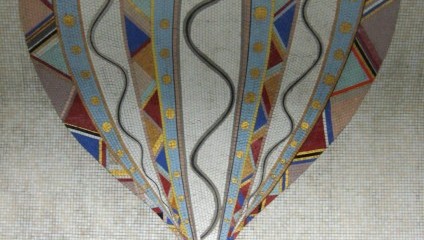
Floating around Finsbury Park's platforms are stylish hot air balloons, which lift the spirits of anyone frustrated by Piccadilly Line delays and add some much needed feng shui. When artist Annabel Grey was asked for a design specifically for the station, the balloons idea came to her because (according to her official website ) they 'give you a feeling of elevation, as it is a very deep tunnel'. She's also the person to thank for the Marble Arch murals by the platform, which encourages you to stare at the walls instead of the electronic sign indicating how late your train will be.
Murals at Charing Cross
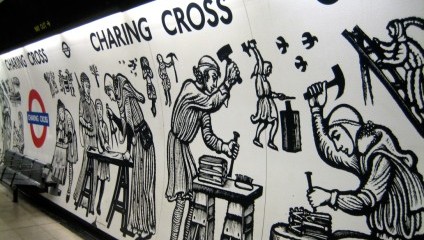
Charing Cross is for Londoners who know better. It's less rammed than the surrounding stations a few minutes away, and its Northern Line platforms are graced with a mini museum on the walls. David Gentleman's engraved mural illustrates how the station was built by stonemasons and sculptors, climbing ladders and hammering away with sharp objects. Told from left to right, the artwork is supposed to be read by walking down the platform - just like they always advise you to on the tannoy during rush hour.
Blue Glass Wall at Southwark
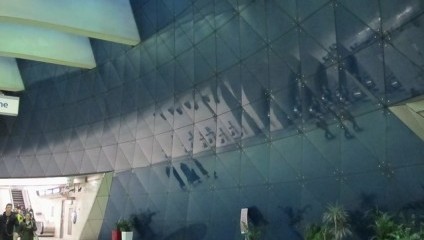
Completed in 1999 as part of a £250,000 project, the award-winning wall (this wall has won more awards than you) is one of Southwark's many dazzling surfaces. The glass reflects a real effort to create something inventive with the space: the triangular pieces, slotted together with steel, were so intricately positioned that a new piece of computer software was developed to work out the geometry. One of the architects Richard MacCormac listed the theatrical setting of Queen of the Night in the Magic Flute as an inspiration - now it's time to convert other stations to German opera backgrounds.
Gallery Platform at Gloucester Road
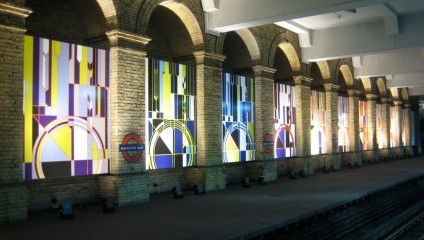
For most commuters, the notion of a new exhibition every few months consists of giant posters advertising another film you probably won't see. At Gloucester Road, anyone waiting for a train of passing through can catch how an unused platform has been converted to an art space. Four commissioned pieces are added under the arches, designed to be big enough to cover the space and catch the attention of someone zooming along. And, like many other tube construction staffers, the artists work at night to avoid disrupting commuters.
Paolozzi's Mosaics at Tottenham Court Road
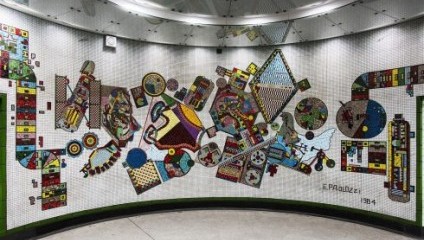
The removal of Eduardo Paolozzi's mosaic arches in February was another reason to shake your fist at Tottenham Court Road's lengthy closure. The tiles, which hung above rammed escalators, offered a much needed respite for stressed commuters, but weren't part of a restructuring plan. However, Paolozzi's other mosaics are still around. These cover the interiors with colour-coordinated jigsaw images reflecting the different moods of the Central Line and North Lines. The murals, created in the 1980's, also reflect an older, most artistic era of London.